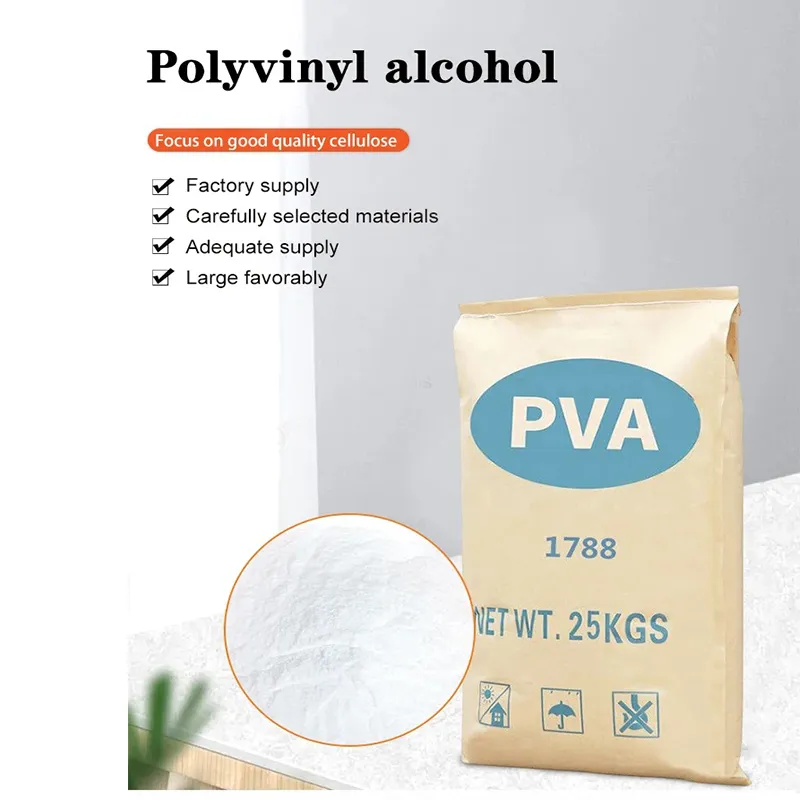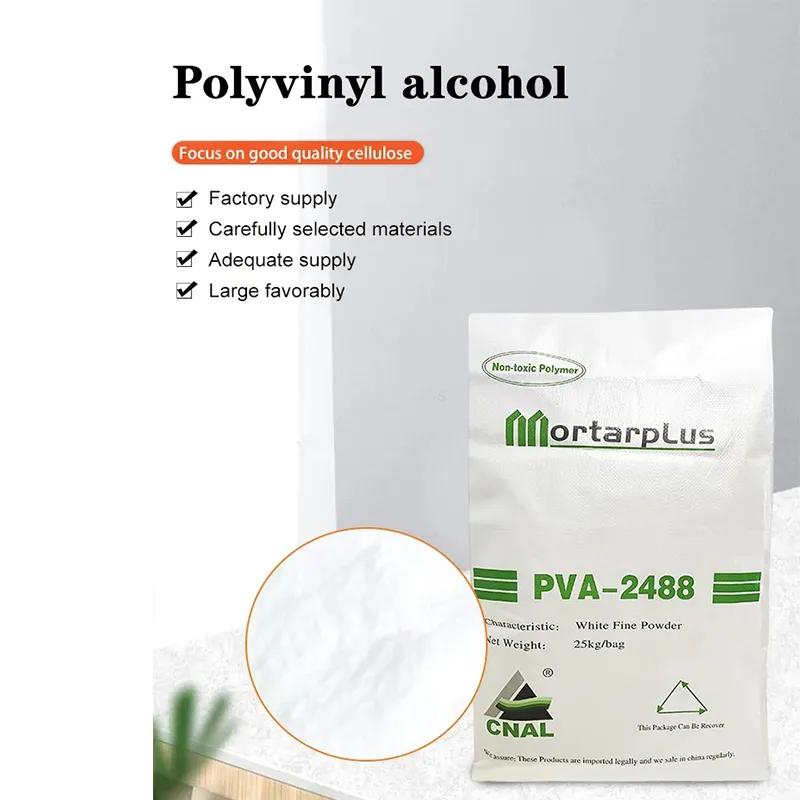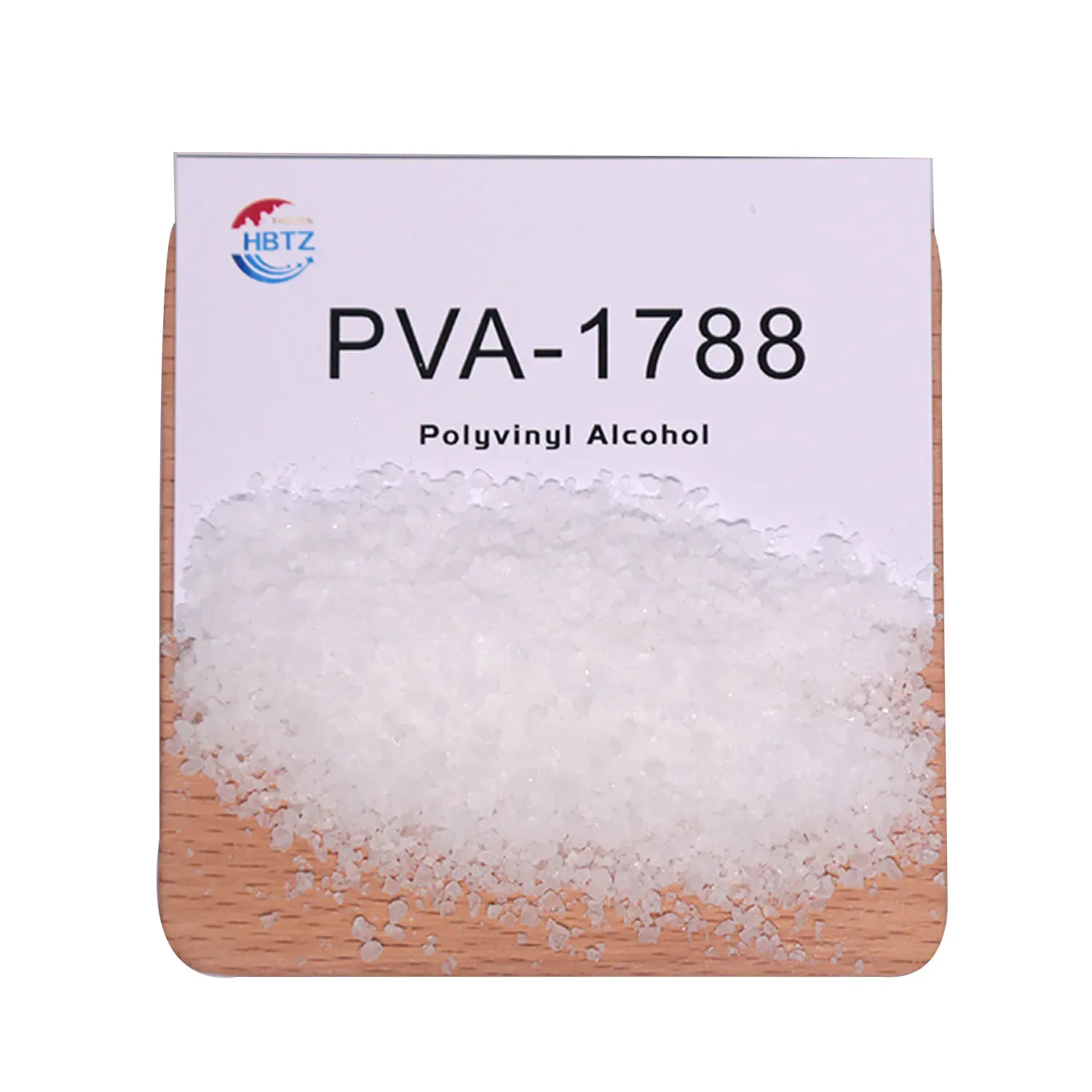
Polyviny Alcohol: High-Purity, Water-Soluble—Need Supply?
Polyviny Alcohol (PVA): what buyers are really asking in 2025
When procurement teams ping me about polyviny alcohol, the questions tend to be refreshingly practical: Will it dissolve cleanly? Can we hit the right viscosity window without baby-sitting the tank? And yes—how stable is it in the real world? I’ve spent a fair chunk of time on plant floors and in labs with PVA, and—surprisingly—it’s the boring details that separate smooth runs from frantic midnight calls.

What it is (and why it still matters)
polyviny alcohol is a water-soluble, odorless white flake/floc/powder polymer. It dissolves in hot water (≈95°C), barely in DMSO, and not in common organics like benzene or acetone. In practice, that makes it a go-to backbone for emulsifiers, paper coatings, strong-but-clean adhesives, warp sizing, and as a precursor to polyvinyl acetals (think fuel-resistant parts and PVB-like applications). The current trend? Higher-solids mixing, cleaner ash, and tight hydrolysis control for repeatable film performance.

How it’s made: quick process walk-through
- Materials: vinyl acetate monomer (VAM), initiator, alcohol (for saponification), deionized water.
- Methods: polymerize VAM to PVAc → alcoholysis/saponification to convert acetate groups to hydroxyls → wash/neutralize → dry/mill to targeted particle size.
- Testing standards: ISO 527/ASTM D882 for tensile film data; JIS K 6726/GB/T 12008.5 for resin properties; ASTM E96 for water vapor transmission; ASTM D570 for water absorption.
- Service life: sealed resin typically 24 months if dry/cool; finished films/coatings vary widely—many users report stable performance 6–24 months depending on humidity and formulation.
- Industries: packaging films, paper & board, construction mortars, textiles, 3D printing binders, cosmetic bases, seed-coating, ceramic binders.

Typical product specs (real-world ranges)
| Property | Typical Range | Test/Standard |
|---|---|---|
| Degree of hydrolysis | 87–89% (partially) or 98–99% (fully) | JIS K 6726 / GB/T 12008.5 |
| Degree of polymerization (DP) | ≈500–3000 (grade dependent) | Manufacturer method |
| Viscosity (4% aq., 20°C) | 5–60 mPa·s | Brookfield/ISO 2555 |
| Volatiles | ≤5% | GB/T 12008.5 |
| Ash content | ≤0.5% | ISO 3451 |
| pH (4% solution) | 5.0–7.5 | JIS K 6726 |
Note: values are indicative; real-world use may vary with water quality, shear, and heat history.

Applications that keep coming up
- Paper & packaging: surface sizing and oil/grease barrier layers (many customers say partially hydrolyzed grades wet out more forgivingly).
- Adhesives: bookbinding, woodworking, label glues—clean films, good green tack.
- Textiles: warp sizing; easy desizing helps wastewater targets.
- Chemical intermediates: polyvinyl acetal formation for fuel-resistant parts.
- Construction: redispersible polymer mortar blends as a binder aid.
Compliance: RoHS/REACH-friendly by design; food-contact suitability depends on region and grade—always check the certificate pack.
Vendor snapshot (apples-to-apples, as much as possible)
| Vendor | Hydrolysis/DP Range | Certs | Lead Time | Customization |
|---|---|---|---|---|
| Tangzhi (Hebei, China) | 87–99% / DP ≈500–3000 | ISO 9001; RoHS/REACH | ≈10–20 days ex-works | Viscosity tuning, particle size, packaging (20–25 kg; big bag) |
| Vendor A (SE Asia) | 88–99% / DP ≈600–2500 | ISO 9001 | ≈3–5 weeks | Limited viscosity options |
| Vendor B (EU) | 88–99% / DP ≈500–3000 | ISO 9001; Food-contact on select grades | ≈2–4 weeks EU; longer export | Film-grade focus; premium pricing |

Case notes and field feedback
Paper mill in the Middle East swapped to a 24 mPa·s, 88% hydrolysis polyviny alcohol and reported smoother curtain-coating and 8–10% lower foam incidents (ASTM E96 WVTR improved ≈6%). A textile line in VN went fully hydrolyzed to improve film strength; tensile by ISO 527 rose ≈12% at same coat weight, with easier wash-off—honestly not what we expected, but water chemistry helped.
Buying checklist (quick but useful)
- Define dissolution conditions: tank size, shear, water hardness, and target solids.
- Pick hydrolysis level for solubility/film needs; choose DP for viscosity and strength.
- Ask for batch CoA plus JIS/GB test references; request ASTM D882 film strip data if you’re layering.
- Confirm shelf life, pallets per container111, and moisture-barrier packaging.
Supplier note: Tangzhi New Materials, Room 2308, Dongsheng Plaza 2, No. 508 Zhongshan East Road, Chang’an District, Shijiazhuang, Hebei, China. If you’re chasing a specific polyviny alcohol curve (say, 12–14 mPa·s at 4% and low ash), ask for a pilot lot—they do custom viscosity blends.
References
- JIS K 6726: Testing methods for poly(vinyl alcohol), Japanese Standards Association.
- GB/T 12008.5: Polyvinyl alcohol resin—Specifications and test methods, Standardization Administration of China.
- ASTM D882: Standard Test Method for Tensile Properties of Thin Plastic Sheeting, ASTM International.
- ISO 527: Plastics—Determination of tensile properties, International Organization for Standardization.
- ASTM E96: Water Vapor Transmission of Materials, ASTM International.
- ASTM D570: Standard Test Method for Water Absorption of Plastics, ASTM International.
-
Reliable Powdered Cellulose Supplier: Quality, Sustainability & InnovationNewsNov.24,2025
-
Find Trusted Microfibrillated Cellulose Suppliers for Sustainable Industrial SolutionsNewsNov.24,2025
-
Leading Methocel Suppliers: Quality, Innovation & Sustainability in Methylcellulose SupplyNewsNov.23,2025
-
Reliable Hydroxyethylcellulose Suppliers for Industry & Sustainability | Tangzhi HPMCNewsNov.23,2025
-
Top Ethyl Cellulose Supplier – Quality, Sustainability, and Industrial SupportNewsNov.23,2025
-
Trusted CMC Powder Suppliers for Food, Pharma & Industrial Use | Tangzhi HPMCNewsNov.22,2025





















